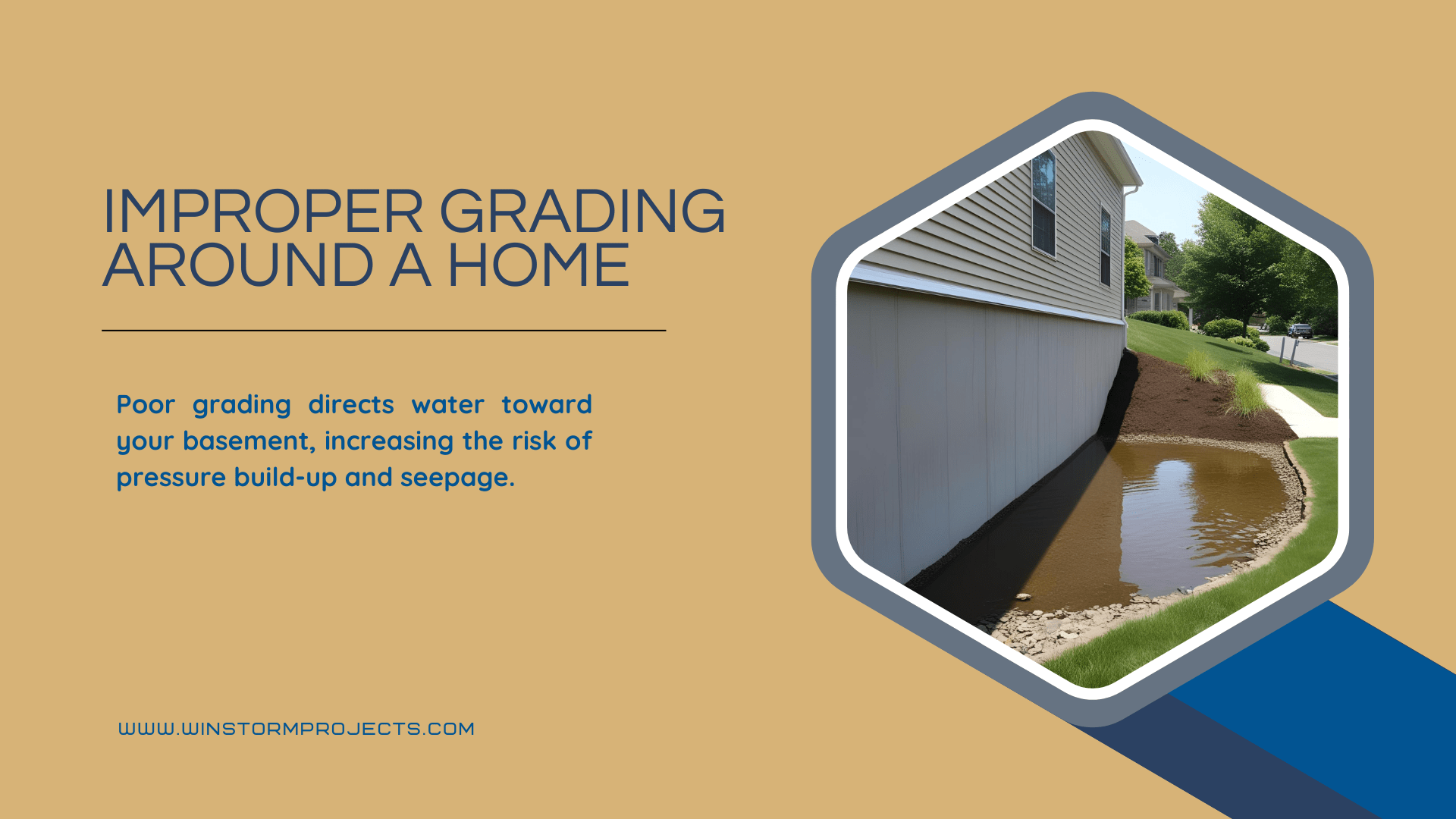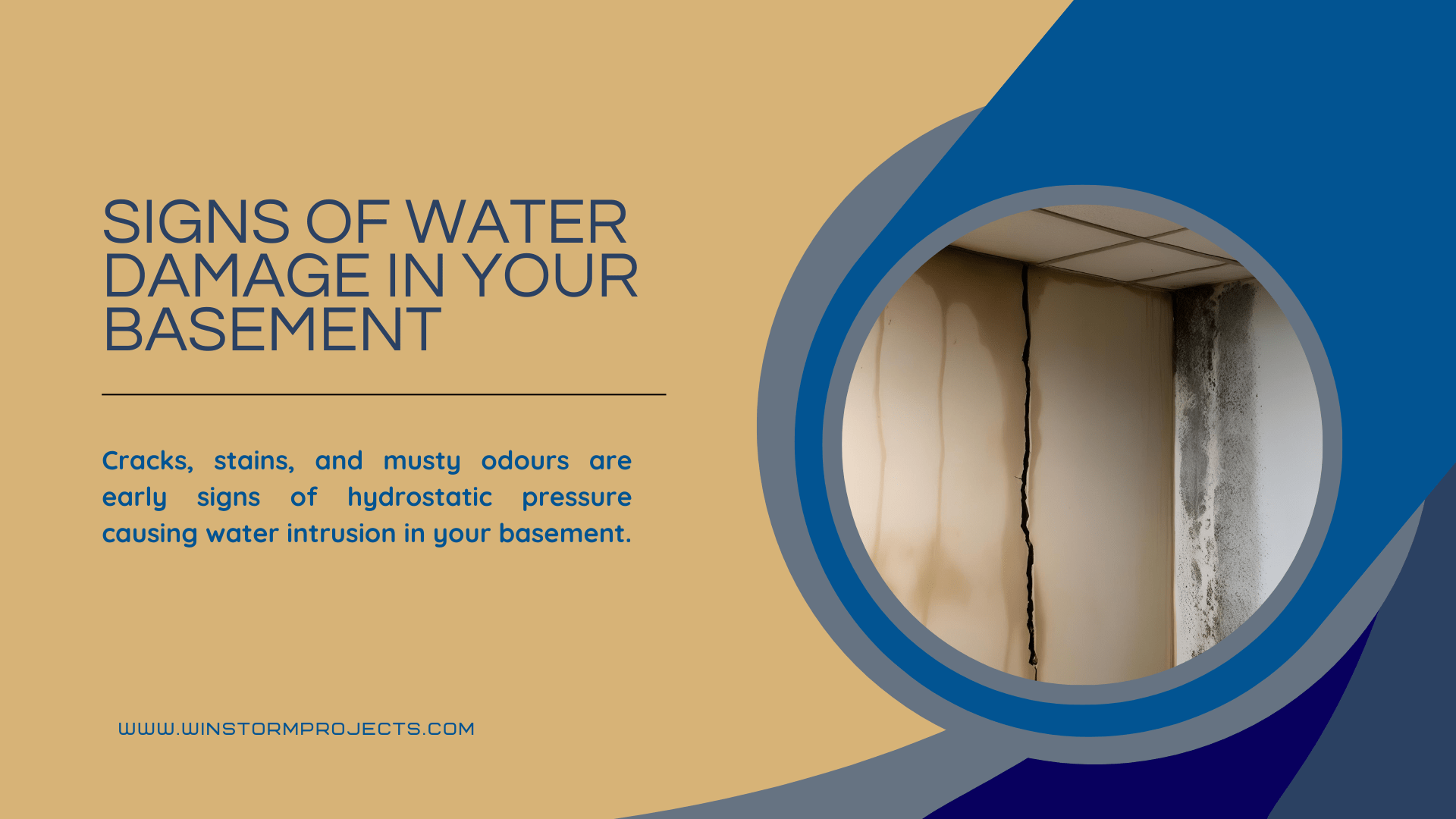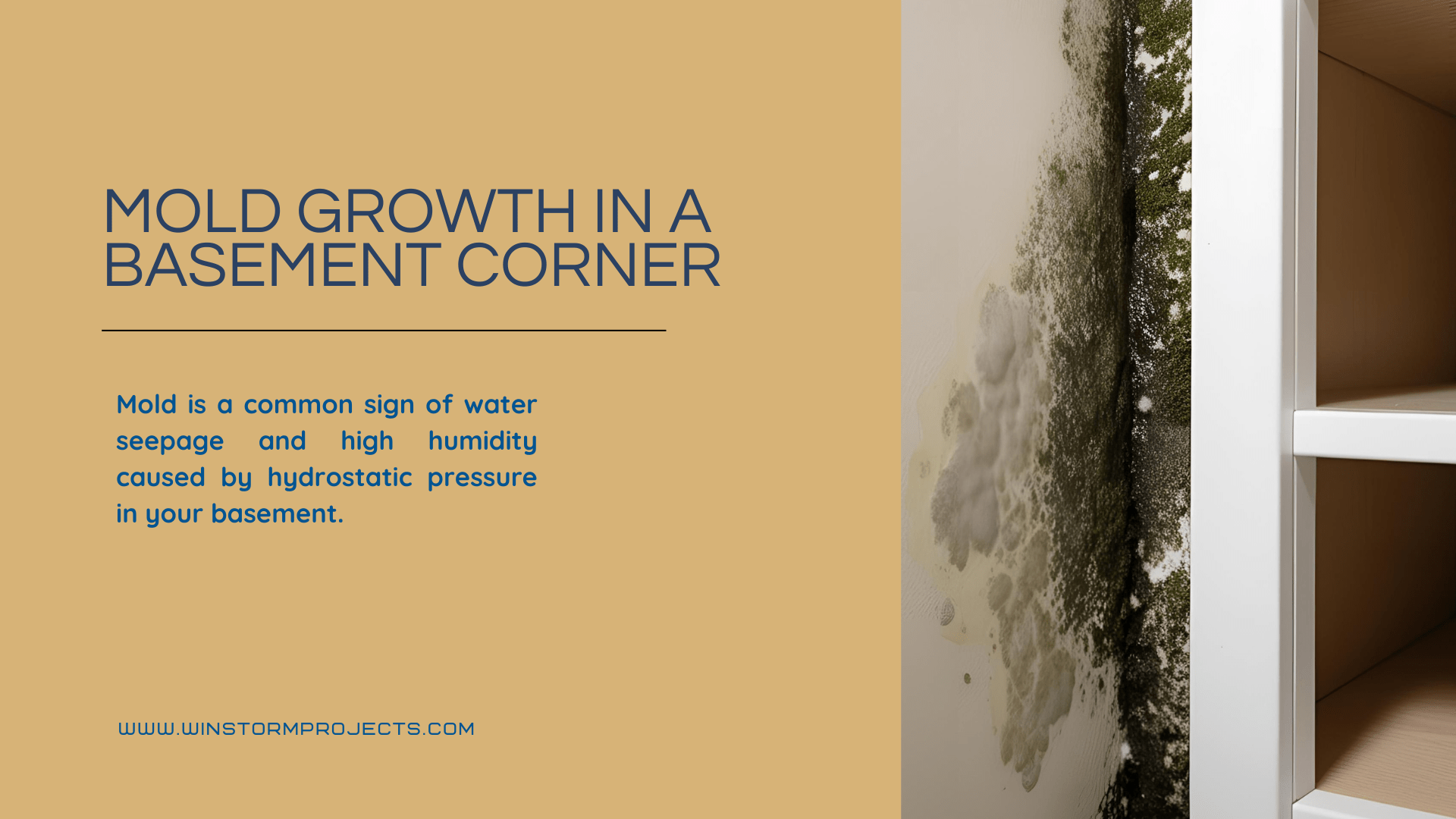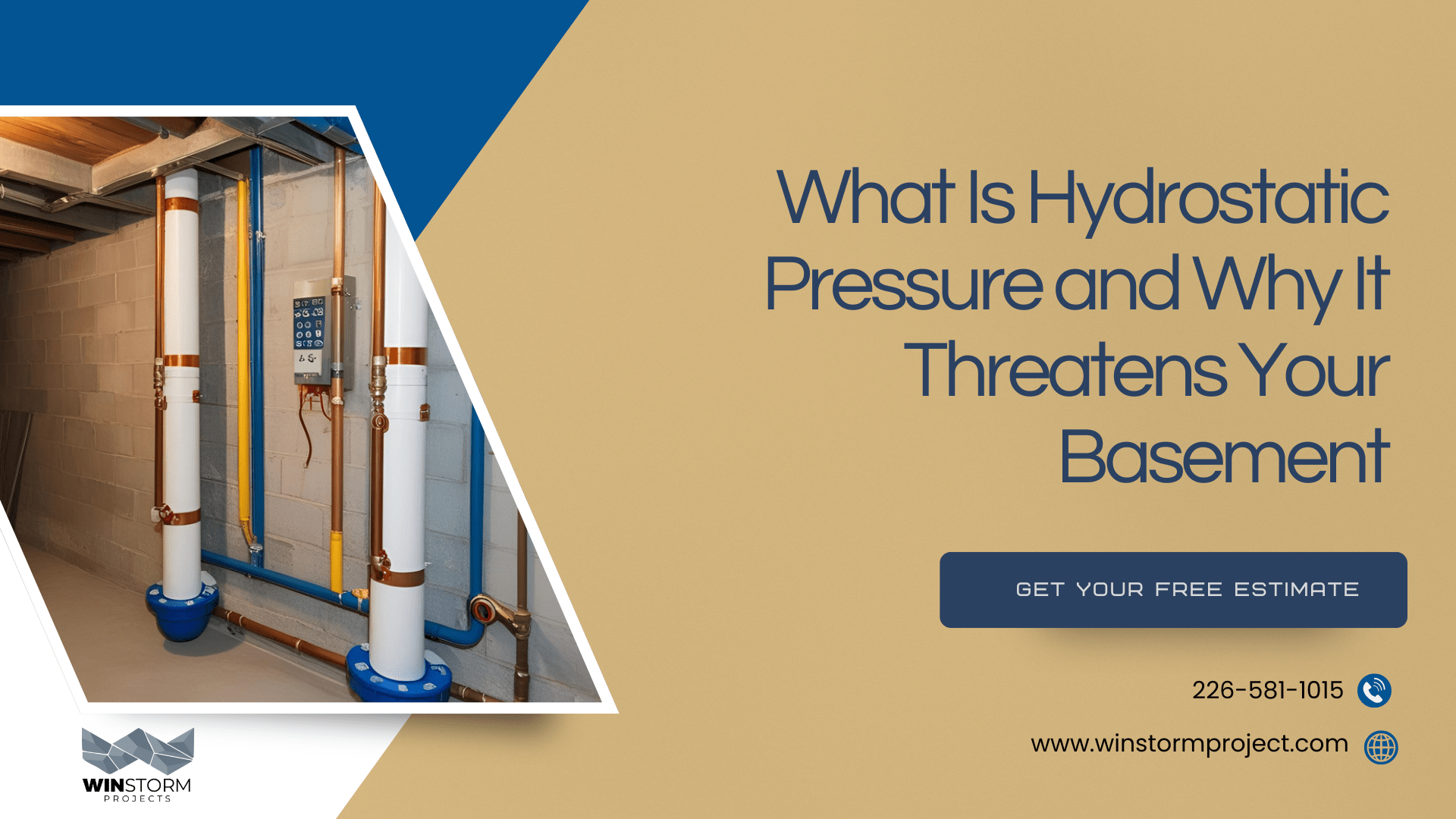Hydrostatic pressure is one of the most common causes of basement water problems—and also one of the most misunderstood. If your basement feels damp, smells musty, or shows signs of cracking, there’s a good chance hydrostatic pressure is the reason. But what exactly is it, and why does it matter so much?
At WinStorm Projects, we help homeowners across Waterloo and Wellington region deal with this invisible but powerful force. In this article, we’ll break down the causes of hydrostatic pressure, the damage it can cause, and how professional basement waterproofing and drainage solutions can help protect your home.
Understanding Hydrostatic Pressure
Hydrostatic pressure is the force water exerts when it builds up in the soil around your foundation. After heavy rain or snowmelt, water saturates the ground and begins pressing against your basement walls and floor. Since concrete is porous, water can eventually seep through—even without visible cracks.
In Wellington county and Waterloo county, especially in areas like Guelph, the combination of frequent rain and clay-heavy soil creates the perfect conditions for increased hydrostatic pressure around your home. Over time, that pressure can lead to serious problems.
What Causes Hydrostatic Pressure Around Your Basement?
Let’s look at the main factors that contribute to water build-up and pressure on your basement walls:
1. Soil Saturation from Rainfall or Snowmelt
When the soil around your foundation becomes overly saturated, water has nowhere to go. The pressure increases with the amount and depth of water in the soil, especially during rainy seasons.
2. Poor Grading and Drainage Around the Home

If your property slopes toward your foundation or doesn’t have proper grading, water collects and pools—causing hydrostatic pressure to build up. Over time, this can lead to water seeping through the basement walls or floor.
3. High Water Table Levels
Ontario’s water table tends to rise during wet months. If your basement sits below the water table, you’ll face constant pressure from below and around the foundation, pushing water into your basement through the path of least resistance.
4. Clogged or Failing Drainage Systems
A blocked gutter or failing sump pump can allow water to collect around your basement. Without working systems in place to move water away from your home, the pressure under your foundation increases—and so does your risk of a leak in your basement.
Signs of Hydrostatic Pressure in Your Basement

Not sure if you’re dealing with hydrostatic pressure? Watch for these telltale signs:
- Cracks in the basement walls or floor
- Water stains or puddles near the foundation
- White powdery residue (efflorescence) on masonry
- Musty odours or visible mold growth
- Moisture around pipe entry points
If you notice any of these, it’s time to act before the damage gets worse.
How It Can Damage Your Home
Hydrostatic pressure doesn’t just leave your basement damp—it can affect your entire foundation over time. Here’s how:
Structural Damage
As pressure increases, it can cause your foundation walls to bow, shift, or crack. Over time, this structural damage becomes more costly and harder to fix.
Basement Flooding
When hydrostatic pressure pushes water into your basement, it can result in repeated flooding—especially during storms. Water can seep through cracks or directly through basement walls and floor slabs.
Mold Growth and Air Quality Issues

A damp basement creates the perfect environment for mold, which affects not only your indoor air quality but also your health.
Decreased Property Value
Persistent water damage in your basement can lower your home’s value, making it harder to sell in the future. It may even raise insurance premiums or lead to denied claims.
How to Prevent Hydrostatic Pressure Around Your Basement
The good news? Hydrostatic pressure is manageable—with the right basement waterproofing solutions. Here’s what we recommend:
Install Proper Drainage Systems
Drainage systems like French drains and weeping tiles collect and redirect water away from your basement. They relieve pressure before it can build up around your foundation.
Waterproof Your Basement from the Outside
Exterior basement waterproofing using membranes and coatings stops water from entering in the first place. This method is highly effective for long-term protection.
Fix Grading Issues
Make sure the ground around your foundation slopes away from your basement. This keeps water from pooling where it can do the most damage.
Maintain Gutters and Downspouts
Clogged gutters can allow roof water to fall directly around your foundation. Keep them clean and ensure downspouts direct water away from your home.
Install or Maintain Your Sump Pump
A reliable sump pump removes excess water that builds up under your basement floor, helping to manage hydrostatic pressure in your basement.
Schedule a Free Inspection
The best way to protect your basement is to catch small issues before they turn into major repairs. WinStorm Projects offers free inspections to assess the risk of hydrostatic pressure and recommend the right fix.
Final Thoughts: Why It Matters
Understanding hydrostatic pressure—and how to control it—is the first step in preventing water damage in your basement. If you’re dealing with damp spots, cracks, or signs of water seepage, don’t wait. The longer you ignore the problem, the more serious (and expensive) it can become.
At WinStorm Projects, we’re here to help with expert waterproofing services tailored to Ontario’s challenging climate and soil conditions. Whether you need basement waterproofing, drainage upgrades, or simply want peace of mind, we’ve got the tools and experience to protect your basement and your home.
Need help? Schedule your free inspection and quote today. Let’s keep water away from your basement—for good.

